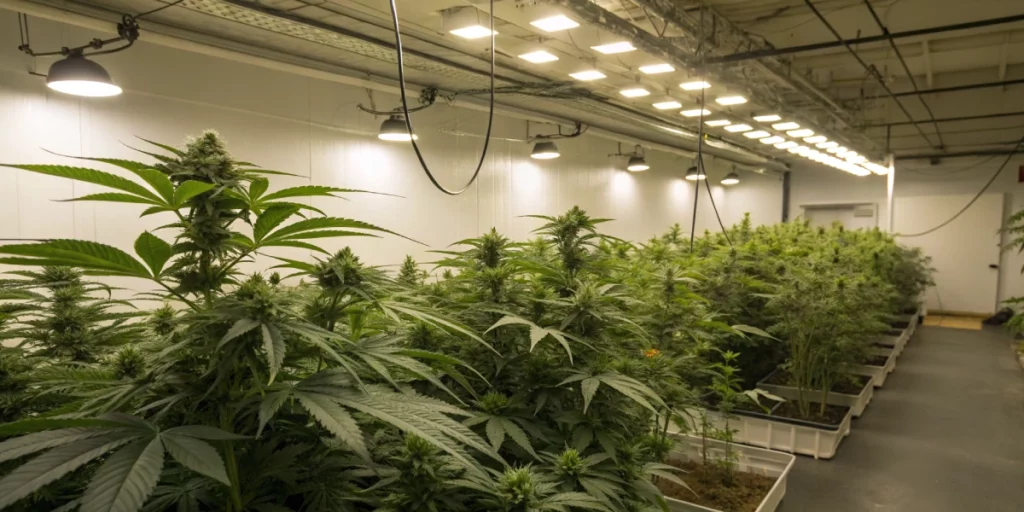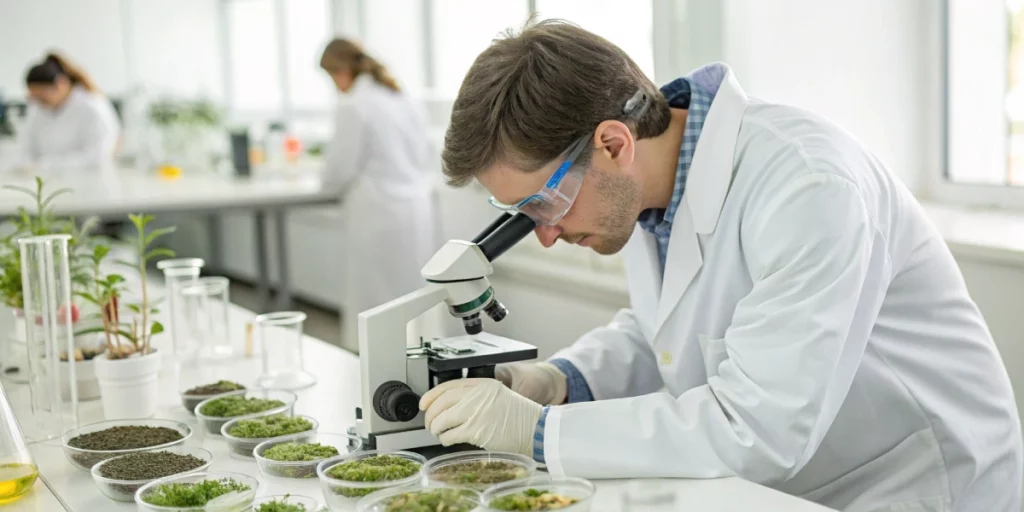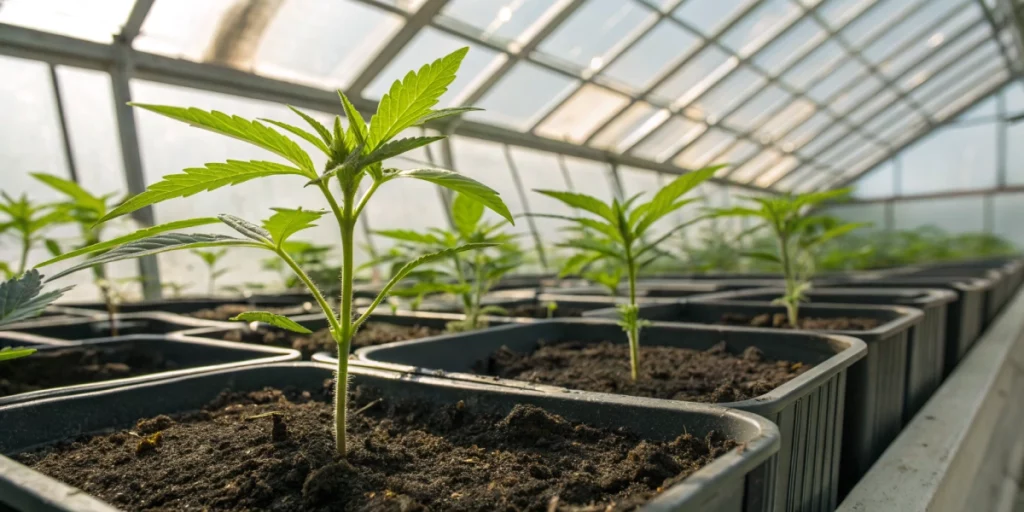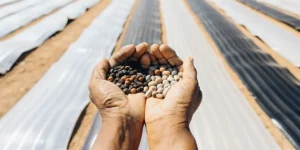What Are Triploid Seeds?
Definition of Triploidy
Triploidy occurs when a plant inherits three sets of chromosomes instead of the usual two. In most cannabis varieties, breeders work with diploid or tetraploid forms. By creating a third chromosome set, they unlock unique traits in leaf structure and flower development. Growers find this mix of genetic material fascinating because it alters how cells divide and how buds form. Grasping these changes helps cultivators appreciate the impact of extra chromosomes on plant features.
Plants with three chromosome sets display shifts in cell size and nutrient use. This often shows up as subtle differences in leaf thickness or color. Such traits can influence water uptake and resistance to environmental stress. As a result, triploid specimens stand apart from diploid or tetraploid relatives. These genetic nuances set the stage for specialized growth habits and harvest profiles.
How They’re Created
Breeders begin by inducing a tetraploid plant. They apply a treatment to young shoots that doubles chromosome counts. After confirming four sets, they cross this plant with a normal diploid specimen. The resulting seeds carry three chromosome sets. By choosing healthy parents, breeders ensure strong genetics in every seed batch.
This process demands precise timing and testing. Experts monitor chromosome levels using lab tools and microscope analysis. They select parent plants for traits like vigor and disease resistance. Once they confirm both parents, they allow controlled pollination. The seeds that develop carry the triploid trait, ready for growers to cultivate.
Genetic Stability
Triploid specimens often show a high degree of genetic uniformity. Growers who choose to grow triploid cannabis seeds report consistent plant height and flower structure across batches. This stability comes from balanced gene expression within each cell. As a result, cultivators enjoy predictable growth cycles and synchronized harvest dates.
Uniform genetics translate directly into quality control. Whether growing indoors or in open fields, managers can plan lighting, feeding, and labor needs with confidence. Consistent flower size and cannabinoid levels reduce post-harvest sorting. In commercial operations, this uniformity cuts waste and boosts efficiency throughout production.
Advantages Over Diploid Varieties
Uniform Growth
Triploid specimens exhibit synchronized growth rates and heights. Plant canopies rise evenly, which streamlines light distribution and irrigation. Growers avoid patchy spots where some plants overshadow others, promoting fair access to resources.
Moreover, consistent growth simplifies training techniques. Methods like low-stress training or topping deliver the same effect across all plants. This even canopy ensures uniform light penetration, leading to balanced bud development. Growers can then schedule one harvest window, saving time and labor.
Enhanced Vigor
Plants with three chromosome sets often display stronger early vigor. Many growers notice rapid root establishment and sturdy stems in these plants. This vitality helps seedlings compete against pathogens and recover from mild stress.
Triploid specimens recover quickly after pruning or transplanting. Their robust root systems absorb water and nutrients at an accelerated rate. As a result, they tend to yield more biomass in the same growing period. This boost in vigor makes them an attractive option for cultivators aiming to maximize production.
Sterility Benefits
One striking advantage of triploid specimens lies in their low fertility. These plants focus energy on bud production rather than seed formation. As a result, they rarely produce viable seeds, which helps growers achieve seed-free flowers.
Seedless buds offer smoother consumption and enhanced aromas. They also reduce the risk of accidental pollination in adjacent crops. For extraction facilities, fewer seeds mean cleaner biomass and less wear on processing equipment. This sterility streamlines every stage from cultivation to final product creation.
Applications in Cultivation
Seedless Flower Production
Many producers aim to create seedless flowers for premium markets. To achieve this, they choose triploid specimens because they rarely set seeds. With fewer seeds, flower quality rises and processing waste drops. This focus boosts customer satisfaction and brand reputation.
Growers also note that these plants often show denser trichome coverage. Redirected energy supports enhanced resin production, which can increase cannabinoid and terpene content. Such effects elevate product profiles, making seedless buds a sought-after offering among connoisseurs and medicinal users alike.
Specialty Hybrid Development
Breeders leverage triploid genetics to craft novel hybrids. By crossing triploid plants with diploid or tetraploid lines, they mix unique gene sets. This practice lets them target traits like scent profiles, growth habits, or specific cannabinoid ratios.
Experimental hybrids often exhibit unexpected flavor or resilience traits. For instance, breeders can enhance drought tolerance or bring out rare terpene combinations. Such specialized lines satisfy markets craving one-of-a-kind experiences. Specialty hybrid development benefits from the extra genetic flexibility triploid plants introduce.
Commercial Scale Uses
Commercial growers value predictability and output. Triploid specimens offer both by combining uniform growth with robust vigor. In large greenhouses or open fields, managers map plant layouts precisely, reducing labor and resource needs.
At scale, they also avoid unwanted pollination thanks to sterility. Seedless fields protect neighboring crops and maintain genetic purity. For extraction operations, consistent plant material feeds processing lines without frequent adjustments. This steady throughput ensures reliable volumes of oils and concentrates.

Germination and Growth Tips
Pre-soaking Protocols
To boost germination, many growers pre-soak seeds in plain water or a mild nutrient solution for up to 24 hours. This step softens the shell, helping roots emerge faster. By checking seeds hourly, growers spot early sprouting and move ready seeds to their growth medium.
Once taproots appear, seeds transfer to moist paper towels or starter plugs. Growers keep the area warm—around 21 to 24 °C—and maintain humidity with light misting. This gentle handling ensures seedlings emerge robust and ready for the next stage of development.
Ideal Medium
Choosing the right medium sets the stage for healthy roots. A common mix combines coco coir with perlite to provide air pockets and drainage. This blend supports rapid root expansion and prevents waterlogging. Growers often add a touch of organic compost for initial nutrients.
Alternatively, growers use rock wool cubes for a sterile start. These cubes hold moisture evenly and support young roots well. Before planting, they adjust pH to around 5.8–6.2. This range promotes efficient nutrient uptake and minimizes early stage stress.
Transplant Strategies
When seedlings display true leaves, it’s time to transplant into larger pots. Growers handle plants by the leaf area to protect delicate stems. They fill new containers with their chosen medium and make a small hole to accept the root ball.
After transplanting, they water gently to settle the soil around roots. Then they place plants under low-intensity light, gradually increasing strength over a week. This slow acclimation prevents shock. Regular checks on moisture and leaf posture help keep plants growing smoothly.
Market Availability
Leading Breeders
Several specialized breeders invest in triploid lines. They partner with labs and universities to access chromosome testing. This research ensures stable genetics and consistent traits in every seed batch.
Growers find these breeders through trade events or industry contacts. Word of mouth and grow-journal reports spread their reputations. Reputable companies enforce strict quality control and clear labeling. These practices help cultivators trust each shipment they receive.
Online Seed Banks
Many seed banks list triploid products on their websites. Growers compare catalogs, read user reviews, and check shipping policies. Some platforms include germination guarantees, giving extra peace of mind.
Sites often detail parent lines, expected traits, and ideal conditions. Community forums and grow-logs add real-world feedback. Such shared experiences guide newcomers in selecting the best seeds for their setups and goals.
Pricing Trends
Prices for triploid lines have fallen as demand grows. Early offerings sold at high premiums due to research costs. Now, competition among breeders drives prices closer to those of premium diploid varieties.
Bulk buyers negotiate lower rates, making these seeds accessible to small and mid-sized operations. This trend opens the door for more growers to adopt triploid genetics without straining their budgets.

FAQs about triploid cannabis seeds
Do triploid seeds produce cannabinoids?
Yes, triploid specimens still synthesize cannabinoids in their resin glands. While they seldom develop seeds, their flowers often contain comparable or higher cannabinoid levels than diploid plants. Many cultivators note strong aroma profiles and potent effects, making these plants suitable for both recreational and therapeutic applications.
Are these seeds legal to sell?
Legality depends on jurisdiction. Some regions require licenses to sell cannabis genetics, while others permit only hemp varieties with low THC. Triploid seeds that meet regional hemp standards may face fewer restrictions. Always research and comply with local regulations before buying or distributing them in your area.
How do I confirm sterility?
To confirm sterility, grow a female plant alone in a controlled setting and inspect blooms at full maturity. If no seeds appear by the end of the flowering cycle, sterility is confirmed. Some breeders also provide lab certificates with chromosome analysis results to validate that their seeds produce sterile plants.





